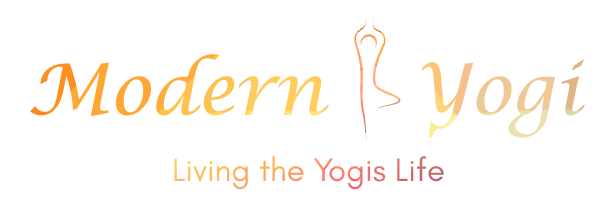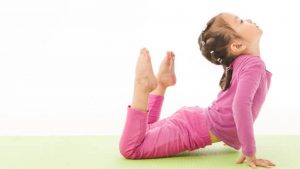This an amazing text for breath or Prana. I found it in the book The Art of Vinyasa of Richard Freeman and Mary Tailor. It is a “must-read” for all the ashtanga practitioners and for the vinyasa practitioners in general. It is a journey at the breathing function on the physical and energetic level, and amazing analysis of the ujjayi breathing through the eyes of Richard Freeman in a way that only this special and charismatic teacher can give. You will find it exactly as it is in the book. Enjoy!

Yoga practice, like life itself, begins with the breath. Breath, or Prana, provides an endless, all-pervading background, a continuous ebb, and flow of sound and perception that unifies, sustains, and informs us on the physical, mental and emotional levels. Prana(with capital P) refers to the internal breath as a whole. We experience it as a vibratory quality of pure sensation and perception within every nook and cranny of the body. It is often referred to as “life breath”. or the immediately distinguished characteristic of sensations, in particular, the awareness of touch-what you feel within your body as the tissues expand and contract. Prana is the perception of temperature or texture through the skin or the feeling of flow from one group of sensations to another. It is associated with the visual sense of light and darkness that we comprehend as part of our visual perception, just as it is associated with the immediate quality of sound and sensations of smell and taste. Prana is perceived in all fields of perception and, like intelligence, reveals and creates a context for patterns that arise. A basic axiom of yoga is that Prana and citta(the mind) move together like two fish swimming in tandem. Move one, and the other automatically follows.
The broad category of Prana, or breath, has many subcategories but five major subdivisions. The first is prana(with a lowercase p), which refers to the breath as it rises and is based in the heart. Apana-based in the pelvic floor-goes down, contracts, and squeezes things out of the body. Samana is based in the navel, it spreads out evenly and is related to the digestive process and assimilation of everything absorbing food as well as subtleties of awareness on all levels of perception. When awakened, the seed-point of samana is said to shine like the sun at the root of the navel. Udana is based in the throat and rises up the middle of the head and out through the top. The all-pervasive form of breath known as vyana is felt throughout the body, most notably in the skin.
The most immediate and workable patterns of breath are apana, which controls the exhalation pattern, and prana, which controls the inhalation pattern. Awareness of these complementary patterns of breath opens a door to a direct experience of the sacred nature of all perceptions and mental patterns. When we inhale, it is easy to feel the characteristic expanding, blossoming, and rising sensations that spread throughout the body. The ribs naturally expand as we draw in the breath, and there is an ascendant, alert feeling. At the peak of the inhalation-in the gap before the exhalation begins-there is a sense of limitlessness, interconnectedness, and perhaps even joy at the unfolding of endless forms. When we exhale, it is easy to feel the grounding, squeezing-out and dissolving pattern of the apana as the edges of the diaphragm automatically drop and the ribs contract to accommodate the reduction in the size of the lungs. At the end of an exhale, the pelvic floor tones the mind easily turns inward as we experience the visceral sensations associated with the dissolution of forms which for some may cause feelings of fear or panic to arise.
Most people tend to prefer one of these phases of the breath, there are those who love inhaling and those who favor exhaling. Some of us are too pranic, avoiding the sensations assosiated with exhaling and getting lost in imagination, floating off the face of the earth in our minds. Others favor the exhalation and become too apanic, with a rigid, boring, or depressed point of view. After some practice, we are able to enjoy the entire breath by inviting the opposite physical patterns of inhaling and exhaling to support one another within the body and mind, in this way, we can experience their interdependence.
In the Ashtanga Vinyasa system of yoga, breath is the foundation for the internal forms of the practice. We begin with ujjayi breathing, which serves as the basis for practice whether you are a beginner or an advanced practitioner. In fact, Ashtanga Vinyasa yoga is just this: simple ujjayi breathing with a little movement tossed in. More advanced practitioners can also learn Ujjayi Pranayama, which is a very concentrated form of ujjayi breathing and in which there are breath retention and complete internal focus.
To learn what ujjayi breathing is, sit really straight so the belly is happy and not compressed. Bring your awareness internally. Imagine the central line of the body as vividly as possible like an imaginary plumb line running from the crown of the head down through the middle of the chest and abdomen, through the center of the pelvic floor, all the way down to the earth’s core. The plumb line serves as a reference point for balance and stability within the body and may also be imagined as any stabilizing configuration within the body’s core, say as breath, a shaft of light, or a pattern of energy. To establish the ujjayi breath, imagine that the heart floats in a pool of still water. The base of the plumb line is stabilized as the sitting bones, coccyx and pubic bone drop, causing the pelvic floor muscles to tone. If you are grounded through the root of the body this way and the heart area feels free and open, then breathing is easy. If you are disconnected at any point along that central line-if the heart is constricted, tense or closed, or if the pelvic floor is asleep then ujjayi breathing is not happening.
Keeping the lips lightly closed, simply begin to breathe in and out. By closing your lips, the breath moves through the nose, and the mind can focus more clearly. At this point, the eyes become steady in drsty(gazing). This automatically releases the palate and softens the tongue, so it is easy to focus in sensations in the mouth and the stream of breath going in and out through the nostrils. The waves of the breath start the process of alignment, which is merely the intelligence waking up in the center of the body. Just keep listening, allowing the breath to unfold.
Ujjayi breath is characterized by a sound that results from closing the vocal cords a tiny bit while continuing to keep the tongue quiet and the lips softly closed. The breath makes a smooth, aspirate sound both as you inhale and as you exhale. It sounds almost as if you were whispering the word ah with your lips closed. As we know, whispering can be intimate. When you are close to someone, you don’t shout, and the ujjayi breath has the same intimate quality as if you were whispering to your beloved. Listen for that sound and strengthen the breath, directing it with the intention to be smooth, easy, and even. It is not simply a matter of letting the breath come and go in whatever pattern it happens to take, correct ujjayi breathing depends on a nonforced effort that, like a metronome, keeps the pace and tone of the breath consistent. This resonance of the breath is the mantra of ujjayi breathing and Ujjayi Pranayama, and 99 percent of this breathing technique is opening the ears and listening to that sound. It sounds very much like gas leaking through a valve, which technically it is. You could imagine the sound to be water running through pipes, wind in the trees, or the distant breaking of ocean waves on the shore.
Ujjayi means an upwardly triumphant or victorious breath. Esoterically, ujjayi is when the internal Prana wakes up and victoriously shoots up the central channel of the body to stand on the crown of your head as in Samasthitih(Equal Standing). That’s true Ujjayi Pranayama which may come to you one day. In the meantime, just make some noise with your breath.
Every time we inhale, we concentrate on the residue of the exhalation, and every time we exhale, we focus on the essence of the inhalation. The heart is the radiant point of the inhaling breath, and the overall physical pattern is an upward, spreading, and floating pattern. The exhaling pattern is perceived in the body as a downward, contracting grounding feeling-like water running to earth-with its seed-point at the center of the pelvic floor. When we inhale, we pull the attention of the mind like a thread up through the seed of the exhalation in the middle of the pelvic floor. When we exhale, we release the upper back of the palate to keep the heart open. We concentrate on the smooth, whispering sound and the physical feelings and sensations associated with each phase of this pattern of breath, in addition to the moments of transition-the gaps-as we move from in-breath to out-breath and back again. Feeling the pouring of the apana into the prana and the prana into the apana is contemplative, subtle and wonderful. This is pranayama practice, the whole thing is right here.
During our asana practice, having established the form, flow, and sound of the ujjayi breath, we learn to move in conjunction with the breath. While transitioning in and out of asanas, we consciously practice the inhalation during expansive movements like lifting the arms overhead or moving up and out of a pose. Conversely, we practice more rooted and contracting movements like folding forward, curling the spine, or twisting in conjunction with the exhalation. After getting into a pose, we typically hold it for five full rounds of breath(though for finishing poses and under certain circumstances, we may hold for longer) before again moving on the wave of breath to initiate a smooth shift as we inhale into the next movement within the vinyasa of the pose and sequence. After practicing asanas for some time in this manner, the patterns of breath and the physical movements associated with both inhaling and exhaling deep within the body become intuitively felt, and these flowing patterns reflexively manifest in our external movements. The effect is astonishing. As we move in and out of poses in union with the breath, we may experience a sense of seamlessly joining our inner world with the external world of perception and our interactions with others. As we do, the practice takes on a deeply meditative quality.




